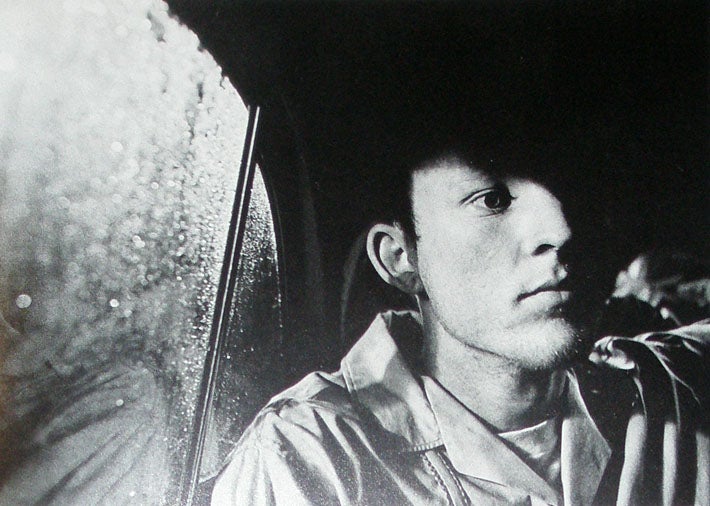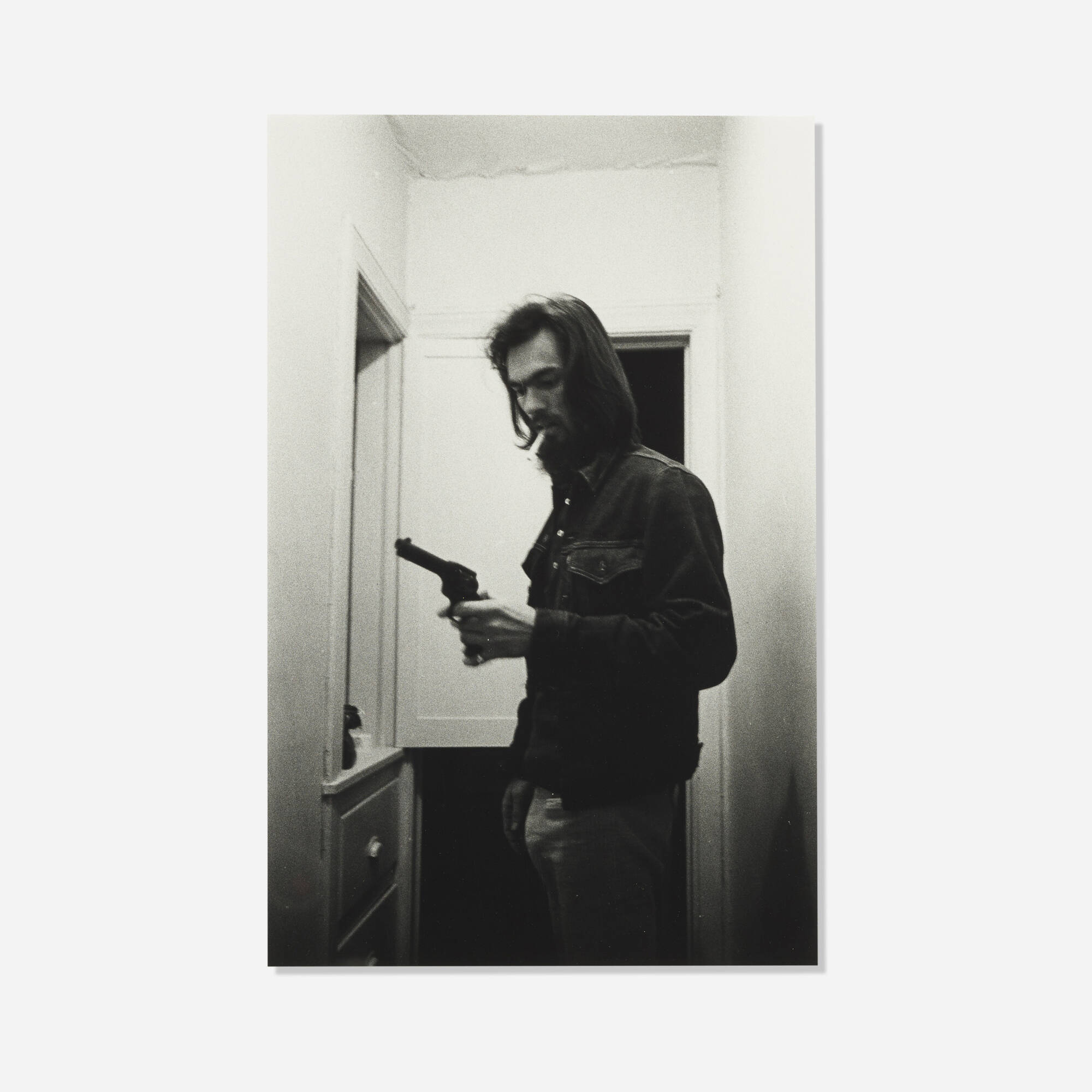
‘Tulsa’ An Essay by Larry Clark (1971) AMERICAN SUBURB X
Larry Clark, born in Tulsa, worked in his family's commercial photographic portrait business before studying photography with Walter Sheffer at the Layton School of Art in Milwaukee, Wisconsin from 1961 to 1963. He served in the military during the Vietnam War and has been a freelance photographer based in New York since 1966. During the 1960s.

Larry Clark, from “Tulsa” . (1971) Larry clark, Larry clark tulsa, Larry clark photography
Larry Clark is an American photographer and filmmaker known for his raw and unfiltered depictions of youth culture. Often controversial, Clark's black-and-white images unflinchingly capture overt sexuality, drug use, and violence, as seen in his iconic photobook Tulsa (1971) and his debut feature film Kids (1995). Clark is able to achieve a level of vulnerability and intimacy with his subjects.
.jpg)
LARRY CLARK (B. 1943) , TULSA Christie's
When it first appeared in 1971, Larry Clark's groundbreaking book Tulsa sparked immediate controversy across the nation. Its graphic depictions of sex, violence, and drug abuse in the youth culture of Oklahoma were acclaimed by critics for stripping bare the myth that Middle America had been immune to the social convulsions that rocked America in the 1960s.

Oil Painting Replica Tulsa 4, 1971 by Larry Clark
Lawrence Donald Clark (born January 19, 1943) is an American film director, photographer, writer and film producer who is best known for his controversial teen film Kids (1995) and his photography book Tulsa (1971).. (1995) and his photography book Tulsa (1971). His work focuses primarily on youth who casually engage in illegal drug use.

Sold Price Larry Clark. TULSA February 4, 0117 1200 PM EST
Lawrence Donald Clark (born January 19, 1943) is an American film director, photographer, writer and film producer who is best known for his controversial teen film Kids (1995) and his photography book Tulsa (1971). His work focuses primarily on youth who casually engage in illegal drug use, underage sex, and violence, and who are part of a.

Sold Price Larry CLARK (né en 1943) Sans titre (série «Tulsa»), 19631971 September 3, 0116 1
Publisher website: https://groveatlantic.com/book/tulsa/Link to purchase newest edition: https://www.abebooks.com/servlet/SearchResults?sts=t&cm_sp=SearchF-_.

LARRY CLARK ON TEENS CRASH Magazine
When it first appeared in 1971, Larry Clark's groundbreaking book Tulsa sparked immediate controversy across the nation. Its graphic depictions of sex, violence, and drug abuse in the youth culture of Oklahoma were acclaimed by critics for stripping bare the myth that Middle America had been immune to the social convulsions that rocked America in the 1960s.

Tulsa Larry Clark
Tulsa. 1972. Larry Clark. American, born 1943. Larry Clark is arguably one of the most controversial and influential photographers of the past fifty years. As a former amphetamine addict and convicted felon, his documentary images of sex, violence, and drug abuse are often autobiographical. In exposing aspects of American youth subculture.

LARRY CLARK “TULSA” (1971) AMERICAN SUBURB X
"I was born in Tulsa, Oklahoma in 1943," says Larry Clark in the introduction to Tulsa, his now iconic photobook from 1971. "When I was 16, I started shooting amphetamine. I shot with my friends.

Tulsa by Larry Clark (English) Paperback Book Free Shipping! 9780802137487 eBay
About The Book. When it first appeared in 1971, Larry Clark's groundbreaking book Tulsa sparked immediate controversy across the nation. Its graphic depictions of sex, violence, and drug abuse in the youth culture of Oklahoma were acclaimed by critics for stripping bare the myth that Middle America had been immune to the social convulsions that rocked America in the 1960s.

Larry Clark Tulsa, Limited Edition (with Gelatin Silver Print) by CLARK, Larry New Hardcover
Larry Clark Untitled, 1963, from the series Tulsa, 1971 Gelatin silver print, printed 1980. This exhibition comes with a parental warning (and controlled access) but it also comes with high praise. Filmmakers such as Gus Van Sant and Martin Scorcese were influenced by Clark's work, and while the subject matter is harsh, the level of artistry.

UCR ARTS
Author. Larry Clark. Country. United States. Subject. Non-fiction. Tulsa is a collection of black-and-white photographs by Larry Clark of the life of young people in Tulsa, Oklahoma. Its publication in 1971 "caused a sensation within the photographic community", leading to a new interest in autobiographical work. [1]

Tulsa Larry Clark 1st Edition
Philbrook DowntownJun 01, 2019 - Dec 29, 2019. World-renowned photographer/filmmaker Larry Clark was born and raised in Tulsa. From 1963 to 1971, he photographed the daily lives of his friends. He captured unforgettable images of sex, violence, and drug use alongside intimate moments of solitary contemplation.

Fast Film LARRY CLARK, "TULSA"
Larry Clark, (born January 19, 1943, Tulsa, Oklahoma, U.S.), American photographer and film director who was best known for his provocative works about teenagers, with drugs and sex often as central elements.. Clark's roots in Tulsa provided the foundation for the images that eventually made him famous. Employed at first in the family portrait business, he left in 1961 to study photography.

Tulsa Larry Clark
Larry Clark. Grove Press, 2000 - Photography - 64 pages. When it first appeared in 1971, Larry Clark's groundbreaking book Tulsa sparked immediate controversy across the nation. Its graphic depictions of sex, violence, and drug abuse in the youth culture of Oklahoma were acclaimed by critics for stripping bare the myth that Middle America had.

283 LARRY CLARK, Untitled (from the Tulsa portfolio)
When it first appeared in 1971, Larry Clark's groundbreaking book Tulsa sparked immediate controversy across the nation. Its graphic depictions of sex, violence, and drug abuse in the youth culture of Oklahoma were acclaimed by critics for stripping bare the myth that Middle America had been immune to the social convulsions that rocked America in the 1960s.